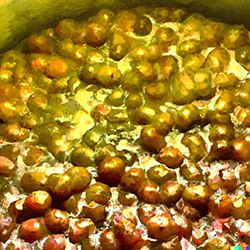How Much Do Wine Fermentation Temperatures Matter? A Lot!
Posted by Matteo Lahm on 20th Dec 2022
Hold onto your corkscrews, folks! The secret to a stellar vino might just be hiding in your thermostat. That's right, the temperature you choose to ferment your wine at can be a game-changer. So, let's uncork the mystery and pour out four ways that playing with fermentation temperatures can shake up your wine-making results:
1. Yeast Activity
Yeast is responsible for converting the sugar in your grape juice into alcohol. The rate at which yeast can do this is directly affected by temperature. Warmer temperatures will lead to more active yeast and a quicker fermentation, while cooler temperatures will have the opposite effect.
2. Aroma and Flavor
The temperature at which fermentation occurs can also impact your wine’s aroma and flavor. Warmer fermentations tend to produce wines with more fruity aromas and flavors, while cooler fermentations can result in wines that are more floral and mineral-driven.
3. Mouthfeel
Another way that fermentation temperature can impact your wine is through mouthfeel. Wines that are fermented at cooler temperatures tend to have a lighter body, while those fermented at warmer temperatures can be fuller-bodied.
4. Alcohol Content
Finally, fermentation temperature can also affect your wine’s alcohol content. Wines fermented at warmer temperatures can have higher alcohol levels, while those fermented at cooler temperatures might have lower alcohol levels. While this might only be slight, it is still relevant. You must be asking how that makes any sense since your alcohol levels are determined by your starting gravity? While you are correct, that is not the whole story. Warmer temperatures facilitate more robust yeast activity. This translates to higher populations which can make all the difference when they are nearing the end of fermentation. You have a better chance of your wine fermenting dry with a warmer must.
If you are a white wine drinker, you must have noticed that whites are a bit sweeter than reds. Whites are fermented at colder temps which can leave behind slightly more residual sugar. Cooler temps and lower yeast populations might result in your yeast stalling before they have gobbled up all the fermentable sugar. Yeast cells die as the alcohol level increases, they live longer in higher concentrations and they reproduce more quickly at higher temperatures.
This explains why yeast starters are very popular. They allow you to introduce a higher population when you inoculate your must. If you are starting with a population several times higher and yeast double their population every 90-120 minutes during the first two days of fermentation, you can understand how much of a difference your fermentation temperature can make when it comes to your final ABV.

Conversely, if your space is cooler and you want reach higher temperatures, a brew belt is a simple and inexpensive tool to keep your batches warmer. You can also move your fermenter into a corner with a space heater. Even placing your fermenter inside another bucket will help as plastic is a natural insulator. This will give you a more fruit forward result with higher alcohol.
So, there you have it! Now that you know, be sure to pay attention to the temperature the next time you’re making a batch and think about what you like to drink. You can direct your fermentation process to suit your flavor preferences and a few degrees can make a world of difference. Good luck!

